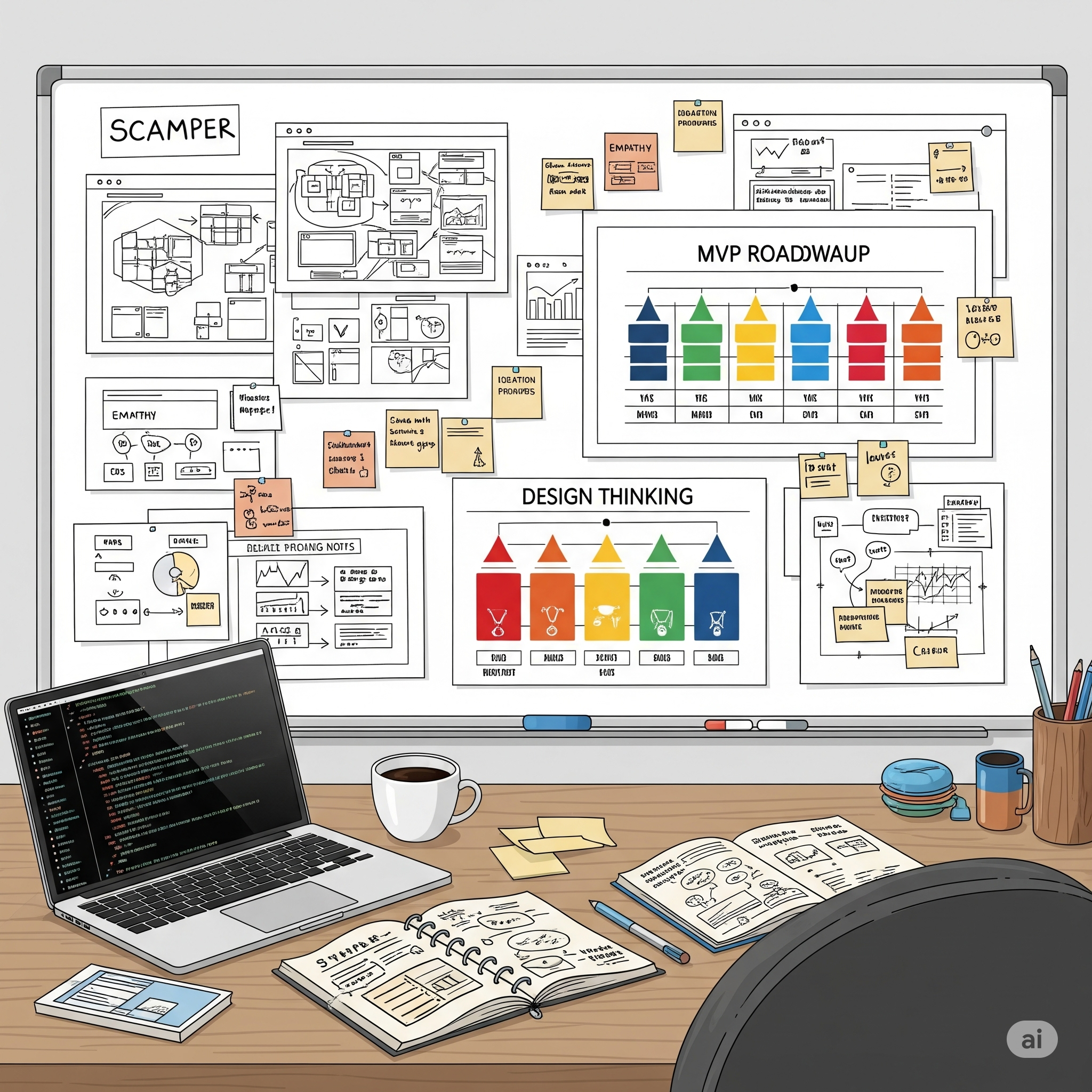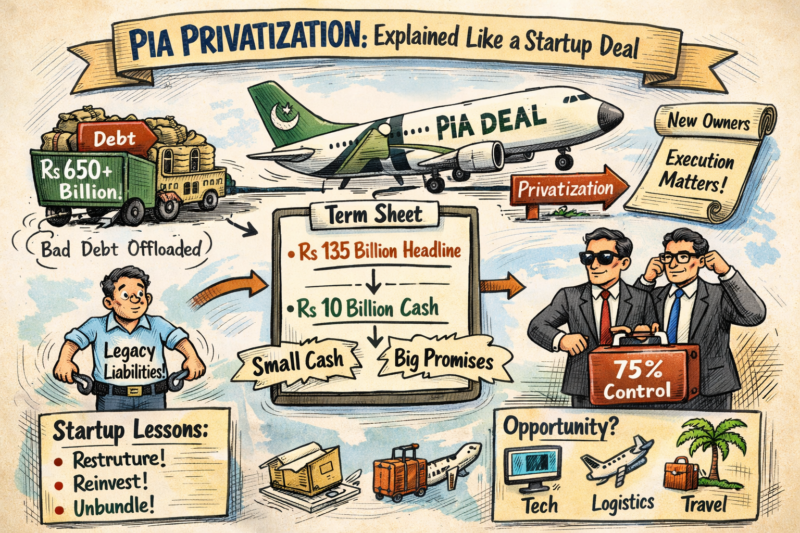Before Canva became a $40B design tool, it began like every great startup. By solving one clear problem: design software was too hard to use. Co-founder Melanie Perkins started small with an online yearbook maker for schools. That simple prototype validated the need, and the rest followed.
Great startups don’t start big. They start focused. This guide shows you how to go from a validated problem to the right solution through smart ideation, fast prototyping, and ruthless prioritization. Similarly, the journey of Dastgyr from MVP to momentum shows how a local Pakistani startup succeeded by solving one problem well. These tools and stories will help you create what users actually need.
1. Turning a Validated Startup Problem into a Real Solution
You’ve uncovered a real, painful problem. That’s a win. But the next step defining a solution worth building is where many teams slip.
Frame the Problem as an Opportunity
Ask: What’s truly broken? Not from your perspective, but from your user’s. Focus on the job-to-be-done. People don’t want a faster horse they want to get from A to B with less hassle.
Try This: “How Might We…”
Instead of jumping to features, ask:
- How might we reduce waiting time for deliveries in Karachi?
- How might we help parents in remote areas access reliable tutoring?
These open-ended questions unlock creativity and shift you into solution mode without prescribing the path too early.
Local Insight
Pakistani startup Marham didn’t just say “let’s digitize healthcare.” They asked, how might we help patients book trusted doctors in under 5 minutes? That led to a simple, high impact booking platform that solved a specific pain.
One-liner takeaway: Start with the pain but define the gain.
2. Top Startup Ideation Frameworks for Fast, Focused Creativity
Once your problem is sharp, ideation needs structure. Not chaos. Here are four frameworks worth using:
| Framework | Best For | How It Works |
| SCAMPER | Evolving existing ideas | Substitute, Combine, Adapt, Modify, Put to another use, Eliminate, Reverse |
| Design Thinking | Empathy-driven teams | 5 stages: Empathize → Define → Ideate → Prototype → Test |
| Mind Mapping | Solo or small team sprints | Visual web of related thoughts and solutions |
| Brainwriting | Quiet teams or remote groups | Write ideas silently, rotate and build on each other’s thinking |
When to Use What
- Solo founder? Start with Mind Mapping.
- Team under pressure? Use Brainwriting to eliminate groupthink.
- User-focused product? Lean on Design Thinking.
Don’t just brainstorm. Choose the right framework for your team’s brain.
3. Prototype vs. MVP: What to Build First
Here’s where founders often overbuild. Let’s get clear:
| Prototype | MVP | |
| Purpose | Test ideas early | Launch usable product |
| Fidelity | Low (sketches, mockups) | High enough for real use |
| Time to build | Hours to days | Weeks |
| Audience | Internal + early testers | Real users |
Bykea’s Early Days
Before launching their app, Bykea validated interest by manually connecting riders via WhatsApp and phone calls their prototype was a spreadsheet. Only once they saw traction did they build the MVP.
Prototype to learn. MVP to earn.
4. Prioritizing Startup Features Like a Pro
Your feature list is growing. Your resources aren’t. So prioritize.
Use a Proven Framework:
- RICE: (Reach × Impact × Confidence) ÷ Effort
Great for comparing features objectively. - MoSCoW: Must-have, Should-have, Could-have, Won’t-have
Simple but effective for roadmap planning. - Kano Model: Categorizes features by how they delight users
Helps prevent you from shipping boring.
Edkasa’s MVP
Edkasa launched with just core video modules for science subjects based on student demand. They skipped bells and whistles and proved their model with paying users.
Prioritize what users will pay for, not just what they’ll clap for.
5. Picking the Best Startup Idea When You Have Too Many
Too many ideas can paralyze you. Here’s how to narrow it down:
Try a Scoring Matrix:
Score each idea 1–5 on:
- Feasibility: Can we build it?
- Desirability: Do users want it?
- Viability: Will it make money or impact?
Total the scores. The best rise to the top.
Run a Landing Page Test
Before you build, test demand with a simple landing page + a “Join Waitlist” or “Buy Now” button. Use no-code tools like Carrd or Webflow.
Tip: Pakistani founders behind Oraan did this before building just a landing page and WhatsApp number to test if women would join digital committees (committees = rotating savings).
One-liner takeaway: When in doubt, test the click before the code.
6. Startup Action Plan: From Idea to MVP
Here’s your checklist to go from idea to prototype to MVP:
- Define the core problem (job-to-be-done)
- Use “How Might We…” to reframe it
- Choose 1 ideation method (SCAMPER, Design Thinking…)
- Sketch a low-fidelity prototype (Figma, pen & paper, Miro)
- Run feedback sessions with 5 target users
- Prioritize features using RICE or MoSCoW
- Build a simple MVP (no-code if needed)
- Launch it to real users
- Iterate fast based on feedback
Starter Tools:
- Figma – UI mockups
- Miro – Brainstorming and flows
- Tally or Google Forms – User feedback
- Notion – Feature prioritization
- Carrd/Webflow – Landing page tests
Final Flow: From Problem to Product
Problem ➜ “How Might We…” ➜ Ideation Framework ➜ Prototype ➜ Prioritization ➜ MVP ➜ User Feedback ➜ Iteration
Building the right solution doesn’t start with code; it starts with clarity. Once you launch, the journey continues as you learn how to build with users in mind to find product-market fit.
Bookmark this process. Share it with your team. Build smarter.
FAQ
A prototype is a low-fidelity representation of your idea used to test assumptions quickly, while an MVP is a functional version of your product built with just enough features to validate it in the real market.
Use a scoring matrix to evaluate each idea across feasibility, desirability, and viability. You can also test ideas using quick landing pages or no-code demos to gauge interest.
Absolutely. Frameworks like SCAMPER, Brainwriting, and Design Thinking are designed for creativity, not coding. They’re especially useful for non-technical founders working with diverse teams.




